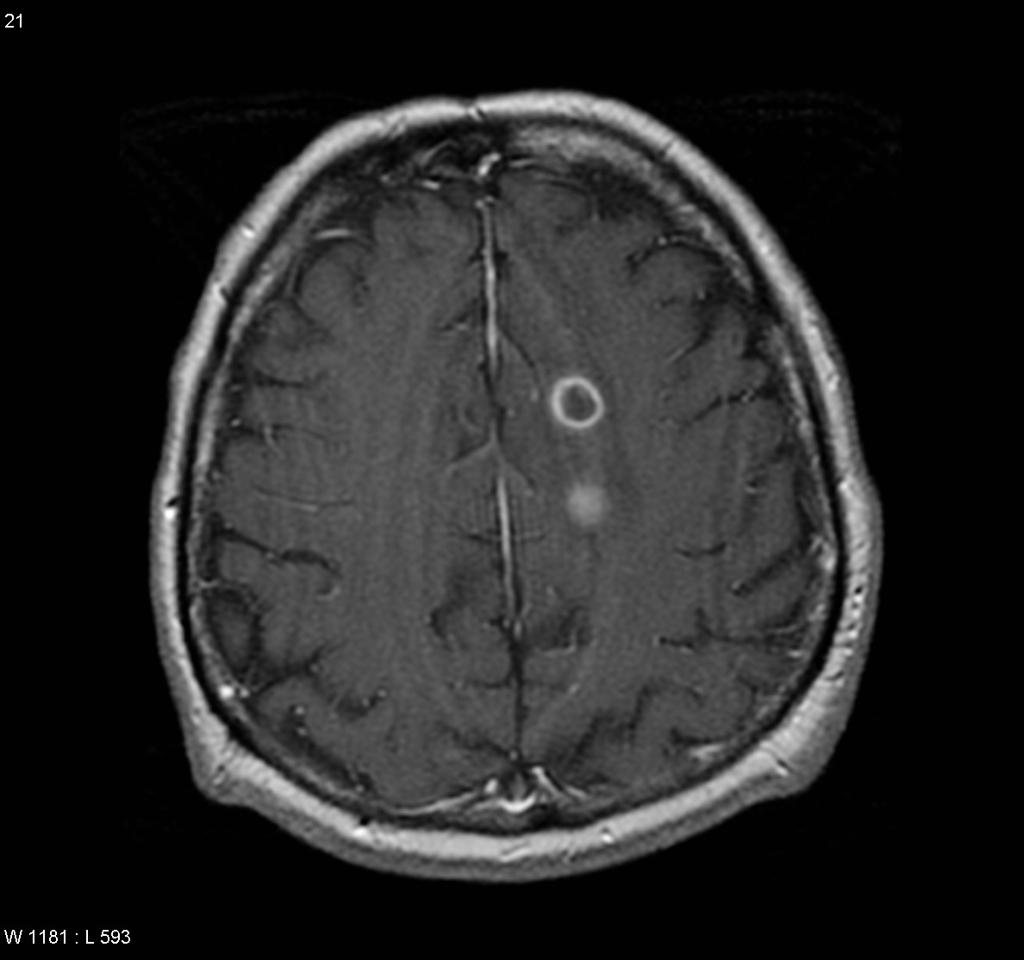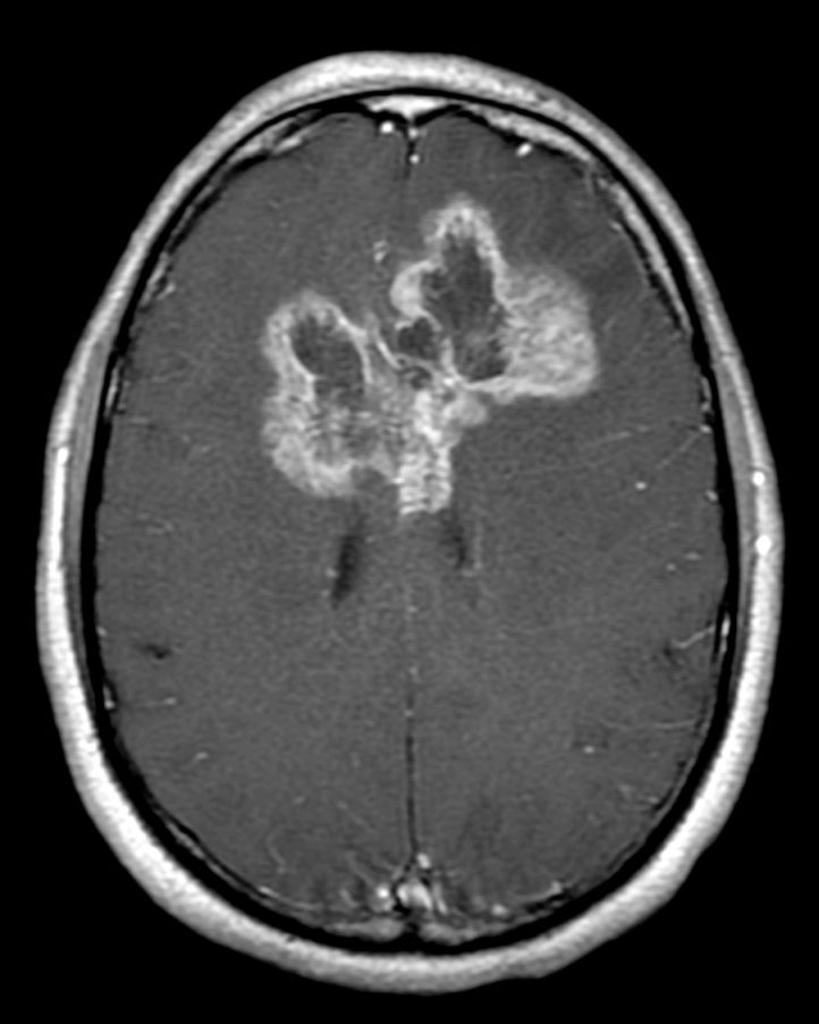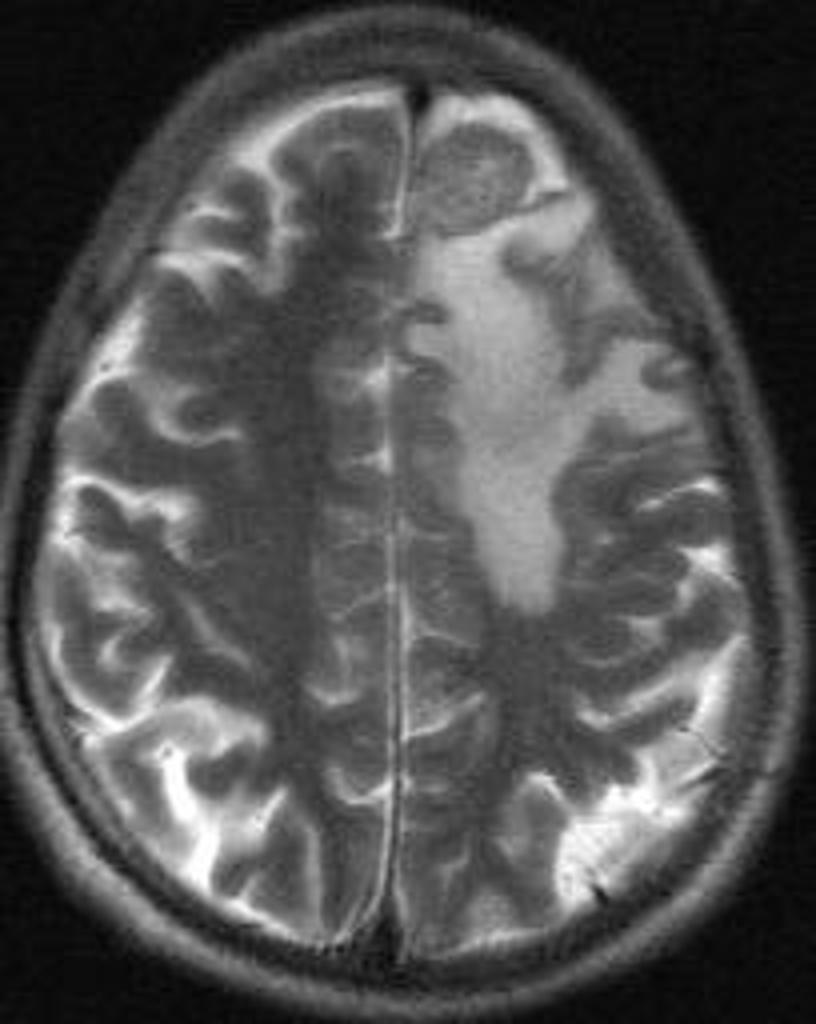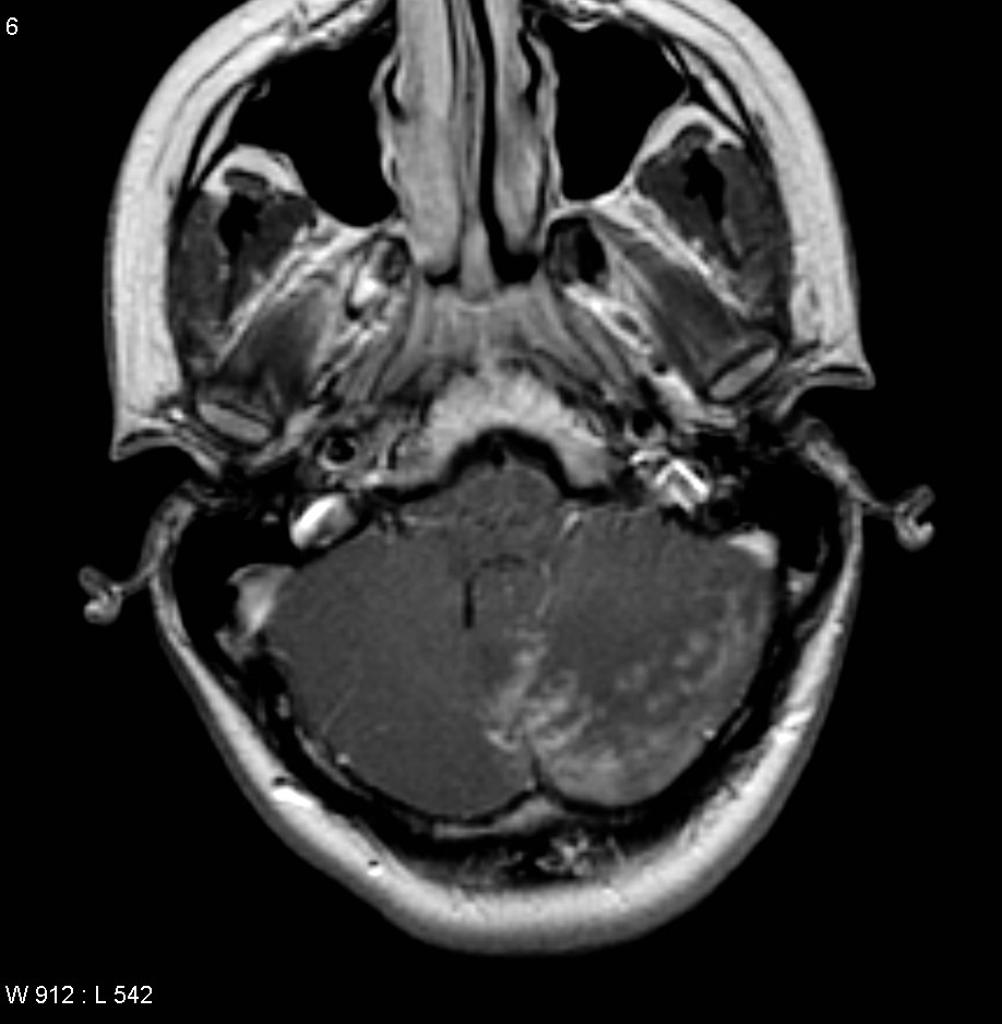Tuberculosis differential diagnosis: Difference between revisions
Jump to navigation
Jump to search
Ahmed Younes (talk | contribs) No edit summary |
Mashal Awais (talk | contribs) mNo edit summary |
||
| Line 1: | Line 1: | ||
__NOTOC__ | __NOTOC__ | ||
[[Image:Home_logo1.png|right|250px|link=https://www.wikidoc.org/index.php/Tuberculosis]] | [[Image:Home_logo1.png|right|250px|link=https://www.wikidoc.org/index.php/Tuberculosis]] | ||
{{CMG}}; {{AE}} {{AL}} | {{CMG}}; {{AE}} {{Mashal Awais}}; {{AL}} | ||
==Overview== | ==Overview== | ||
| Line 91: | Line 91: | ||
*CXR and CT demonstrates [[Internal|cavities]] in the upper lobe of the lung | *CXR and CT demonstrates [[Internal|cavities]] in the upper lobe of the lung | ||
| | | | ||
*[[Sputum]] smear positive for [[acid-fast bacilli]] and nucleic acid amplification tests (NAAT) is used on sputum or any sterile fluid for rapid diagnosis and is positive for mycobacteria. | *[[Sputum]] smear-positive for [[acid-fast bacilli]] and nucleic acid amplification tests (NAAT) is used on sputum or any sterile fluid for rapid diagnosis and is positive for mycobacteria. | ||
|- | |- | ||
| | | | ||
| Line 105: | Line 105: | ||
*[[Pleural effusion]] and [[empyema]] are common findings | *[[Pleural effusion]] and [[empyema]] are common findings | ||
| | | | ||
*[[Complete blood count|CBC]] is positive for causative organism | *[[Complete blood count|CBC]] is positive for the causative organism | ||
|- | |- | ||
| | | | ||
| Line 128: | Line 128: | ||
*Renal symptoms, [[hematuria]], red cell [[casts]] | *Renal symptoms, [[hematuria]], red cell [[casts]] | ||
| | | | ||
*Pulmonary nodules with cavities and infiltrates are a frequent manifestation | *Pulmonary nodules with cavities and infiltrates are a frequent manifestation of CXR | ||
| | | | ||
| Line 143: | Line 143: | ||
*Pulmonary nodules with cavitation are located in the upper lobe ([[Caplan syndrome]]) on Xray. | *Pulmonary nodules with cavitation are located in the upper lobe ([[Caplan syndrome]]) on Xray. | ||
| | | | ||
*Positive for both [[rheumatoid factor]] and | *Positive for both [[rheumatoid factor]] and anti-cyclic citrullinated peptide [[Antibody|antibody.]] | ||
|- | |- | ||
| | | | ||
| Line 188: | Line 188: | ||
{| class="wikitable" | {| class="wikitable" | ||
|+Differentiating brain | |+Differentiating brain tuberculoma from other brain cystic lesions | ||
!Disease | !Disease | ||
!Prominent clinical features | !Prominent clinical features | ||
| Line 216: | Line 216: | ||
*Culture from the CT-guided aspirated lesion helps in identifying the causative agent. | *Culture from the CT-guided aspirated lesion helps in identifying the causative agent. | ||
| | | | ||
* [[Contrast enhanced CT]] provides rapid assessment of the size and number of the abscesses. | * [[Contrast enhanced CT]] provides a rapid assessment of the size and number of the abscesses. | ||
* [[MRI|MRI:]] [[Diffusion-weighted imaging|Diffusion-weighted imaging (DWI)]] [[MRI]] can differentiate [[brain abscesses]] from [[Brain cyst|cystic brain lesions]] with [[Sensitivity|sensitivit]]<nowiki/>y and [[specificity]] of 96%.<ref name="urlBrain Abscess — NEJM">{{cite web |url=http://www.nejm.org/doi/full/10.1056/NEJMra1301635 |title=Brain Abscess — NEJM |format= |work= |accessdate=}}</ref> | * [[MRI|MRI:]] [[Diffusion-weighted imaging|Diffusion-weighted imaging (DWI)]] [[MRI]] can differentiate [[brain abscesses]] from [[Brain cyst|cystic brain lesions]] with [[Sensitivity|sensitivit]]<nowiki/>y and [[specificity]] of 96%.<ref name="urlBrain Abscess — NEJM">{{cite web |url=http://www.nejm.org/doi/full/10.1056/NEJMra1301635 |title=Brain Abscess — NEJM |format= |work= |accessdate=}}</ref> | ||
| Line 233: | Line 233: | ||
|[[Tuberculoma|Brain tuberculoma]] | |[[Tuberculoma|Brain tuberculoma]] | ||
| | | | ||
* [[Tuberculoma|Brain tuberculomas]] has insidious onset of symptoms as compared to [[tuberculous meningitis]]. | * [[Tuberculoma|Brain tuberculomas]] has an insidious onset of symptoms as compared to [[tuberculous meningitis]]. | ||
* Presentations are usually due to the pressure effect, not the [[Bacilli|T.B. bacilli]]. | * Presentations are usually due to the pressure effect, not the [[Bacilli|T.B. bacilli]]. | ||
| Line 245: | Line 245: | ||
| | | | ||
* [[CT]]: [[Contrast enhanced CT|Contrast-enhanced CT]] scan shows a ring enhancing lesion surrounded by an area of hypodensity ([[cerebritis]]) and the resulting [[mass effect]]. | * [[CT]]: [[Contrast enhanced CT|Contrast-enhanced CT]] scan shows a ring enhancing lesion surrounded by an area of hypodensity ([[cerebritis]]) and the resulting [[mass effect]]. | ||
* [[MRI]]: Better than [[CT]] scan in assessing the site and size of the [[tuberculoma]]. Gadolinium-enhanced MRI shows a ring enhancing lesion between 1-5 cm in size (In NCC, the wall is thicker, [[Calcification|calcifications]] are eccentric and the diameter is less than 2 cm) | * [[MRI]]: Better than [[CT]] scan in assessing the site and size of the [[tuberculoma]]. Gadolinium-enhanced MRI shows a ring-enhancing lesion between 1-5 cm in size (In NCC, the wall is thicker, [[Calcification|calcifications]] are eccentric and the diameter is less than 2 cm) | ||
|- | |- | ||
|Neurosarcoidosis | |Neurosarcoidosis | ||
| Line 252: | Line 252: | ||
# Cranial nerve neuropathies: [[Facial palsy]] is the most common presentation. | # Cranial nerve neuropathies: [[Facial palsy]] is the most common presentation. | ||
# [[Meningeal]] involvement: diffuse [[Meningitis|meningeal inflammation]] can cause diffuse [[Polyneuropathy|basilar polyneuropathy]] in 40% of the patients. with [[neurosarcoidosis]]. | # [[Meningeal]] involvement: diffuse [[Meningitis|meningeal inflammation]] can cause diffuse [[Polyneuropathy|basilar polyneuropathy]] in 40% of the patients. with [[neurosarcoidosis]]. | ||
# Inflammatory [[spinal cord]] disease: Inflammatory span usually more than 3 spinal cord segments which | # Inflammatory [[spinal cord]] disease: Inflammatory span usually more than 3 spinal cord segments which help to differentiate it from [[Multiple sclerosis|Multiple Sclerosis]]. | ||
# [[Peripheral neuropathy]]: [[Polyneuropathy|Asymmetric polyneuropathy]] or [[mononeuritis multiplex]]. It may also manifest as [[Guillain-Barré syndrome|Guillain-Barré syndrome (GBS)]] like presentation. | # [[Peripheral neuropathy]]: [[Polyneuropathy|Asymmetric polyneuropathy]] or [[mononeuritis multiplex]]. It may also manifest as [[Guillain-Barré syndrome|Guillain-Barré syndrome (GBS)]] like presentation. | ||
# [[Hypothalamic pituitary adrenal axis|HPO axis]] involvement: may present as [[diabetes insipidus]]. More than 50% of the cases have no radiological signs. | # [[Hypothalamic pituitary adrenal axis|HPO axis]] involvement: may present as [[diabetes insipidus]]. More than 50% of the cases have no radiological signs. | ||
| Line 270: | Line 270: | ||
![[Image:butterfly1802.jpg|center|300px|thumb|MRI brain showing Glioblastoma multiforme - Case courtesy of A.Prof Frank Gaillard, <a href="https://radiopaedia.org/">Radiopaedia.org</a>. From the case <a href="https://radiopaedia.org/cases/28272">rID: 28272</a> ]] | ![[Image:butterfly1802.jpg|center|300px|thumb|MRI brain showing Glioblastoma multiforme - Case courtesy of A.Prof Frank Gaillard, <a href="https://radiopaedia.org/">Radiopaedia.org</a>. From the case <a href="https://radiopaedia.org/cases/28272">rID: 28272</a> ]] | ||
![[Image:intracranial-tuberculoma-mri-brain.jpg|center|300px|thumb|MRI brain showing tuberculoma - Case courtesy of Dr G Balachandran, https://radiopaedia.org/ From the case https://radiopaedia.org/cases/5489"]] | ![[Image:intracranial-tuberculoma-mri-brain.jpg|center|300px|thumb|MRI brain showing tuberculoma - Case courtesy of Dr. G Balachandran, https://radiopaedia.org/ From the case https://radiopaedia.org/cases/5489"]] | ||
![[Image:neurosarcoidosis-and-chiari-i-malformation.jpg|center|300px|thumb|MRI brain showing Neurosarcoidosis - Case courtesy of A.Prof Frank Gaillard, https://radiopaedia.org/ From the case https://radiopaedia.org/cases/4364S]] | ![[Image:neurosarcoidosis-and-chiari-i-malformation.jpg|center|300px|thumb|MRI brain showing Neurosarcoidosis - Case courtesy of A.Prof Frank Gaillard, https://radiopaedia.org/ From the case https://radiopaedia.org/cases/4364S]] | ||
| Line 279: | Line 279: | ||
==Differential Diagnosis== | ==Differential Diagnosis== | ||
Pulmonary tuberculosis must be differentiated from other cavitary lung lesions. | |||
{| class="wikitable" | {| class="wikitable" | ||
| Line 311: | Line 311: | ||
*CXR and CT demonstrates [[Internal|cavities]] in the upper lobe of the lung | *CXR and CT demonstrates [[Internal|cavities]] in the upper lobe of the lung | ||
| | | | ||
*[[Sputum]] smear positive for [[acid-fast bacilli]] and nucleic acid amplification tests (NAAT) | *[[Sputum]] smear-positive for [[acid-fast bacilli]] and nucleic acid amplification tests (NAAT) are used on sputum or any sterile fluid for rapid diagnosis and is positive for mycobacteria. | ||
|- | |- | ||
| | | | ||
| Line 325: | Line 325: | ||
*[[Pleural effusion]] and [[empyema]] are common findings | *[[Pleural effusion]] and [[empyema]] are common findings | ||
| | | | ||
*[[Complete blood count|CBC]] is positive for causative organism | *[[Complete blood count|CBC]] is positive for the causative organism | ||
|- | |- | ||
| | | | ||
| Line 348: | Line 348: | ||
*Renal symptoms, [[hematuria]], red cell [[casts]] | *Renal symptoms, [[hematuria]], red cell [[casts]] | ||
| | | | ||
*Pulmonary nodules with cavities and infiltrates are a frequent manifestation | *Pulmonary nodules with cavities and infiltrates are a frequent manifestation of CXR | ||
| | | | ||
| Line 363: | Line 363: | ||
*Pulmonary nodules with cavitation are located in the upper lobe ([[Caplan syndrome]]) on X-ray | *Pulmonary nodules with cavitation are located in the upper lobe ([[Caplan syndrome]]) on X-ray | ||
| | | | ||
*Positive for both [[rheumatoid factor]] and | *Positive for both [[rheumatoid factor]] and anti-cyclic citrullinated peptide [[Antibody|antibody.]] | ||
|- | |- | ||
| | | | ||
Revision as of 17:42, 22 January 2021

Editor-In-Chief: C. Michael Gibson, M.S., M.D. [1]; Associate Editor(s)-in-Chief: Mashal Awais, M.D.[2]; Alejandro Lemor, M.D. [3]
Overview
Pulmonary tuberculosis must be differentiated from other diseases that cause cough, fever, night sweats, hemoptysis and weight loss, such as: brucellosis, bronchogenic carcinoma, Hodgkin lymphoma, bacterial pneumonia, sarcoidosis, mycoplasmal pneumonia.
Differential Diagnosis
Pulmonary Tuberculosis
| Disease | Findings |
|---|---|
| Bacterial pneumonia | Sudden onset of symptoms, such as high fever, cough, purulent sputum, chest pain. Consolidation on chest X-ray, leukocytosis. |
| Bronchogenic carcinoma | Can be asymptomatic, usually at older ages (> 50 years old), cough, hemoptysis, weight loss |
| Brucellosis | Fever, anorexia, night sweats, malaise,back pain , headache, and depression. History of exposure to infected animal |
| Hodgkin lymphoma | Fever, night sweats, pruritus, painless adenopathy, mediastinal mass |
| Mycoplasmal pneumonia | Gradual onset of dry cough, headache, malaise, sore throat. Diffuse bilateral infiltrates in chest X-ray. |
| Sarcoidosis | Non-caseating granulomas in lungs and other organs, bilateral hiliar adenopathy, predominantly in African American females. |
| Adapted from Mandell, Douglas, and Bennett's principles and practice of infectious diseases 2010 [1] | |
Extra-Pulmonary Tuberculosis
| Extra-Pulmonary Location | Differential Diagnosis |
|---|---|
| Tuberculous Lymphadenitis | Lymphoma, squamous cell carcinoma, papillary thyroid cancer, pyogenic infection |
| Skeletal Tuberculosis | Multiple myeloma, bone metastasis, spinal cord abscess, osteoporosis |
| Tuberculous Arthrits | Bacterial septic arthritis, pseudogout |
| Central Nervous System Tuberculosis | Bacterial meningitis, viral meningitis, encephalitis |
| Tuberculosis Peritonitis | Bacterial peritonitis, chronic peritoneal dialysis |
| Adapted from Asian Spine J. Feb 2014; 8(1): 97–111[2]; Handbook of Clinical Neurology[3]; Circulation Dec 2005 vol.112 no.23 3608-3616[4]; Am J Trop Med Hyg 2013 vol. 88 no. 1 54-64[5] Clin Infect Dis.(2011)53(6):555-562.[6] | |
| Causes of
lung cavities |
Differentiating Features | Differentiating radiological findings | Diagnosis
confirmation |
|---|---|---|---|
|
|
| |
|
|
|
|
|
|
| |
|
|
|
|
|
|
| |
|
|
| |
|
|
||
|
|
| |
|
|
|
| Disease | Prominent clinical features | Lab findings | Radiological findings |
|---|---|---|---|
| Neurocysticercosis |
|
|
|
| Brain abscess |
|
|
|
| Brain tumors |
|
| |
| Brain tuberculoma |
|
|
|
| Neurosarcoidosis |
|
|
|
 |
 |
 |
 |
|---|
Pulmonary tuberculosis must be differentiated from other cavitary lung lesions.
Differential Diagnosis
Pulmonary tuberculosis must be differentiated from other cavitary lung lesions.
| Causes of
lung cavities |
Differentiating Features | Differentiating radiological findings | Diagnosis
confirmation |
|---|---|---|---|
|
|
| |
|
|
|
|
|
|
| |
|
|
|
|
|
|
| |
|
|
| |
|
|
||
|
|
| |
|
|
|
References
- ↑ Mandell, Gerald (2010). Mandell, Douglas, and Bennett's principles and practice of infectious diseases. Philadelphia, PA: Churchill Livingstone/Elsevier. ISBN 0443068399.
- ↑ Moon, Myung-Sang (2014). "Tuberculosis of Spine: Current Views in Diagnosis and Management". Asian Spine Journal. 8 (1): 97. doi:10.4184/asj.2014.8.1.97. ISSN 1976-1902.
- ↑ Garcia-Monco, Juan Carlos (2014). "Tuberculosis". 121: 1485–1499. doi:10.1016/B978-0-7020-4088-7.00100-0. ISSN 0072-9752.
- ↑ Mayosi, B. M. (2005). "Tuberculous Pericarditis". Circulation. 112 (23): 3608–3616. doi:10.1161/CIRCULATIONAHA.105.543066. ISSN 0009-7322.
- ↑ Daher, E. D. F.; da Silva Junior, G. B.; Barros, E. J. G. (2013). "Renal Tuberculosis in the Modern Era". American Journal of Tropical Medicine and Hygiene. 88 (1): 54–64. doi:10.4269/ajtmh.2013.12-0413. ISSN 0002-9637.
- ↑ Fontanilla, J.-M.; Barnes, A.; von Reyn, C. F. (2011). "Current Diagnosis and Management of Peripheral Tuberculous Lymphadenitis". Clinical Infectious Diseases. 53 (6): 555–562. doi:10.1093/cid/cir454. ISSN 1058-4838.
- ↑ 7.0 7.1 7.2 7.3 Chaudhuri MR (1973). "Primary pulmonary cavitating carcinomas". Thorax. 28 (3): 354–66. PMC 470041. PMID 4353362.
- ↑ 8.0 8.1 Mouroux J, Padovani B, Elkaïm D, Richelme H (1996). "Should cavitated bronchopulmonary cancers be considered a separate entity?". Ann. Thorac. Surg. 61 (2): 530–2. doi:10.1016/0003-4975(95)00973-6. PMID 8572761.
- ↑ 9.0 9.1 Onn A, Choe DH, Herbst RS, Correa AM, Munden RF, Truong MT, Vaporciyan AA, Isobe T, Gilcrease MZ, Marom EM (2005). "Tumor cavitation in stage I non-small cell lung cancer: epidermal growth factor receptor expression and prediction of poor outcome". Radiology. 237 (1): 342–7. doi:10.1148/radiol.2371041650. PMID 16183941.
- ↑ 10.0 10.1 10.2 10.3 Langford CA, Hoffman GS (1999). "Rare diseases.3: Wegener's granulomatosis". Thorax. 54 (7): 629–37. PMC 1745525. PMID 10377211.
- ↑ 11.0 11.1 Lee KS, Kim TS, Fujimoto K, Moriya H, Watanabe H, Tateishi U, Ashizawa K, Johkoh T, Kim EA, Kwon OJ (2003). "Thoracic manifestation of Wegener's granulomatosis: CT findings in 30 patients". Eur Radiol. 13 (1): 43–51. doi:10.1007/s00330-002-1422-2. PMID 12541109.
- ↑ 12.0 12.1 Baughman RP, Teirstein AS, Judson MA, Rossman MD, Yeager H, Bresnitz EA, DePalo L, Hunninghake G, Iannuzzi MC, Johns CJ, McLennan G, Moller DR, Newman LS, Rabin DL, Rose C, Rybicki B, Weinberger SE, Terrin ML, Knatterud GL, Cherniak R (2001). "Clinical characteristics of patients in a case control study of sarcoidosis". Am. J. Respir. Crit. Care Med. 164 (10 Pt 1): 1885–9. doi:10.1164/ajrccm.164.10.2104046. PMID 11734441.
- ↑ 13.0 13.1 Brauner MW, Grenier P, Mompoint D, Lenoir S, de Crémoux H (1989). "Pulmonary sarcoidosis: evaluation with high-resolution CT". Radiology. 172 (2): 467–71. doi:10.1148/radiology.172.2.2748828. PMID 2748828.
- ↑ 14.0 14.1 Murphy J, Schnyder P, Herold C, Flower C (1998). "Bronchiolitis obliterans organising pneumonia simulating bronchial carcinoma". Eur Radiol. 8 (7): 1165–9. doi:10.1007/s003300050527. PMID 9724431.
- ↑ 15.0 15.1 15.2 15.3 Al-Ghanem S, Al-Jahdali H, Bamefleh H, Khan AN (2008). "Bronchiolitis obliterans organizing pneumonia: pathogenesis, clinical features, imaging and therapy review". Ann Thorac Med. 3 (2): 67–75. doi:10.4103/1817-1737.39641. PMC 2700454. PMID 19561910.
- ↑ 16.0 16.1 Cordier JF, Loire R, Brune J (1989). "Idiopathic bronchiolitis obliterans organizing pneumonia. Definition of characteristic clinical profiles in a series of 16 patients". Chest. 96 (5): 999–1004. PMID 2805873.
- ↑ 17.0 17.1 Lee KS, Kullnig P, Hartman TE, Müller NL (1994). "Cryptogenic organizing pneumonia: CT findings in 43 patients". AJR Am J Roentgenol. 162 (3): 543–6. doi:10.2214/ajr.162.3.8109493. PMID 8109493.
- ↑ 18.0 18.1 Suri HS, Yi ES, Nowakowski GS, Vassallo R (2012). "Pulmonary langerhans cell histiocytosis". Orphanet J Rare Dis. 7: 16. doi:10.1186/1750-1172-7-16. PMC 3342091. PMID 22429393.
- ↑ 19.0 19.1 Moore AD, Godwin JD, Müller NL, Naidich DP, Hammar SP, Buschman DL, Takasugi JE, de Carvalho CR (1989). "Pulmonary histiocytosis X: comparison of radiographic and CT findings". Radiology. 172 (1): 249–54. doi:10.1148/radiology.172.1.2787035. PMID 2787035.
- ↑ Brouwer MC, Tunkel AR, McKhann GM, van de Beek D (2014). "Brain abscess". N. Engl. J. Med. 371 (5): 447–56. doi:10.1056/NEJMra1301635. PMID 25075836.
- ↑ "Brain Abscess — NEJM".
- ↑ 22.0 22.1 "Primary Brain Tumors in Adults - American Family Physician".
- ↑ "The Journal of Association of Chest Physicians - Tuberculoma of the brain - A diagnostic dilemma: Magnetic resonance spectroscopy a new ray of hope : Download PDF".
- ↑ 24.0 24.1 "Neurosarcoidosis".